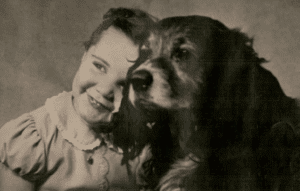I cried Monday. I didn’t intend to. I didn’t mean to. But I did. The memories came swirling back, rose up inside of me, and caught me off guard. I thought I was long past feeling such sorrow over something that happened so long ago. I was wrong.
I was writing an opinion piece for The Citizen newspaper when I received a phone call. The caller asked me if I was near a television. I said that I was but that it was off. The person said, “You need to turn it on. Now!” I hung up and did so. Every major station carried the news that an aircraft had flown into one of the Twin Towers in New York City.
I stood watching the flames, feeling sorry for those killed or injured. “How does a plane miss something so large?” I thought.
Then word came that it wasn’t just an aircraft after all. I had assumed that it was a small two- or four-seater private plane. It was a major passenger jet. Then I understood why the damage was so great and that the death toll would be great.
Then, I watched as the second airliner slammed into the other tower. I stood up and said, “Oh, my God!” This wasn’t an accident, I realized. We were under an attack of some kind. This was planned.
The horror and shock mounted. I don’t know how long I stood, numb and trying to disbelieve what I was clearly seeing on the screen. It would get worse.
News came, shortly followed by video, that another commercial aircraft had crashed into the Pentagon. Then another aircraft bound likely for the White House, or the Capitol Building was, by the courageous action of several passengers, who were alerted by family and friends on the ground as to what was happening, bravely stormed the murderers on Flight 93 and took the plane down, where it crashed in a field in Pennsylvania. They all died saving the lives of others.
I was still watching when one tower fell, collapsing in on itself. Not long after, the other tower fell. At day’s end, 2,997 people died that day, including the 19 murderers who hijacked the four passenger planes.
America would remember the selfless heroism of the 343 firefighters and the 71 police officers who plunged into the burning infernos of the towers to attempt to rescue the victims and who never came out.
The first official victim, labeled Victim #1 was a Franciscan friar and Catholic priest named Mychael Judge, a volunteer NYFD chaplain who was killed by falling debris even as he was praying for the first responders and for the people inside.
All told, 102 nations lost citizens in the 9/11 attacks. It was the worst terror attack in recorded human history. While most of the world grieved, television showed the citizens of some nations dancing in the streets and celebrating with apparent glee the attacks. In the years since September 11, 2001, nearly as many people who were killed on that day have died as a result of 9/11 related diseases.
Just a few days ago, CBS News reported that the DNA of two victims, a man and a woman, had finally been identified. The DNA remains of over 1,000 victims have yet to be identified 22 years after the attacks.
Around 7,000 U. S. military personnel and 8,000 contractors have died in the War on Terror since 9/11. This does not include the many more who were wounded or maimed. The Washington Post has reported that more than 906,000 people, including 387,000 civilians, died as a direct result of the wars. Another 38 million have been displaced or made refugees. The Post reported that the United States spent over 8 trillion dollars in the “desert wars.”
The terrible ripples of what happened on September 11, 2001, continue to the present day. As do the memories. This past Monday, as I reflected and looked at photographs from that day, one gripped me.
It was the photo of someone (and there were a number of such people) who, facing the flames of hellfire in their tower, with no hope of escape, leaped from windows torn or blown open and plummeted to their deaths far below.
So, as I thought of the terror in the towers, in the Pentagon, on Flight 93, as I thought of the shattered lives and families, as I thought of the heroes who went into the towers, those who brought down a plane over Pennsylvania, and the tens of thousands who went off to war to avenge and defend a nation, I shed some tears.
Will we forget? Have we forgotten? I sincerely hope not. And I hope we remember that the people who did these dastardly deeds, or their successors, have certainly not forgotten. Given an opportunity, they will do it again.
[David Epps is the Rector of the Cathedral of Christ the King (www.ctk.life). Worship services are on Sundays at 10:00 a.m. and on livestream at www.ctk.life. He is the bishop of the Diocese of the Mid-South (www.midsouthdiocese.life). He may be contacted at [email protected].]













Leave a Comment
You must be logged in to post a comment.